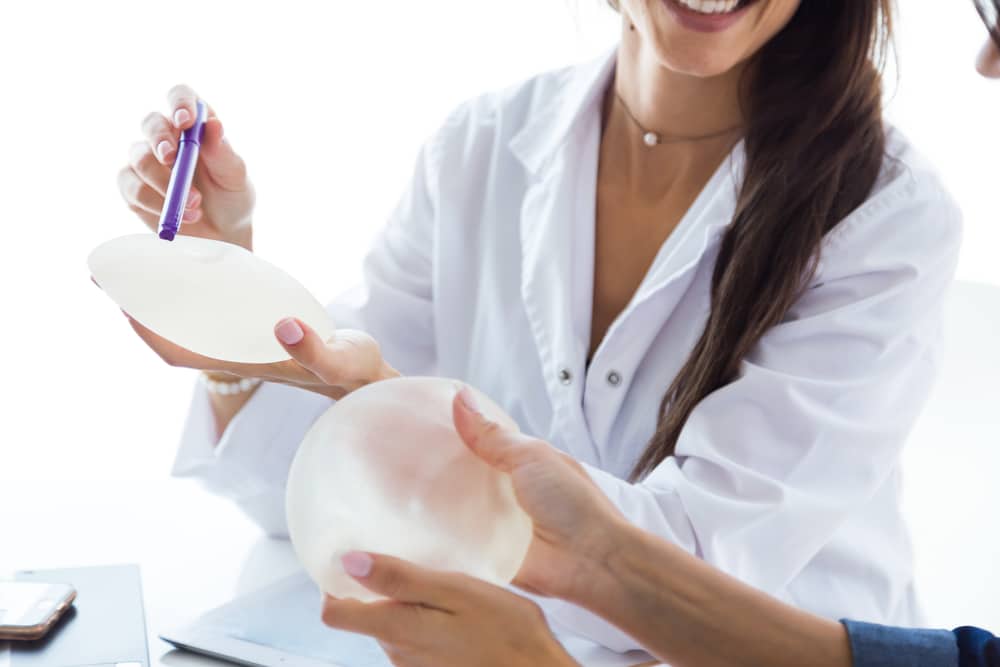Prothèses mammaires : ce qu'il faut savoir
La taille et la forme des prothèses (pré-remplies de gel de silicone) sont rigoureusement étudiées par le chirurgien en fonction du désir de la patiente.L’intervention consiste à la mise en place de prothèses mammaires afin de corriger une hypoplasie mammaire, c’est-à-dire un volume des seins insuffisant par rapport à la morphologie. Elle peut exister d’emblée (seins petits depuis la puberté) ou apparaître secondairement, à la suite d’un amaigrissement important ou d’une grossesse suivie d’allaitement.
Prothèses mammaires : renseignements pratiques
- Type : mise en place d’implants afin d’augmenter le volume des seins
- Anesthésie : neuroleptanalgésie ou anesthésie générale

Découvrez votre future apparence grâce à la consultation 3D
Grâce à la technologie 3D Crisalix, simulez différentes options pour votre future intervention et choisissez celle qui vous correspond le mieux.
L’hypoplasie des seins se définit par des seins dont le volume est insuffisant pour être en harmonie avec la silhouette de la patiente.
Elle résulte souvent d’un mauvais développement de la glande pendant l’adolescence ou survient plus tard, par exemple après un bouleversement hormonal, une grossesse ou un amaigrissement, phénomènes diminuant le volume de la glande.
L’hypoplasie mammaire est parfois accompagnée d’une ptose (seins tombants dus à une glande mammaire affaissée, une peau distendue et une aréole placée trop bas).
Touchant à la féminité, ce défaut est en général mal vécu par la patiente, aussi bien sur le plan physique que psychologique, au point qu’elle en est parfois très complexée et perd confiance en elle. La plastie d’augmentation mammaire par prothèse peut résoudre cet inconvénient d’une poitrine trop petite.
Cet acte chirurgical est envisageable à partir de 18 ans et tout au long de la vie. Les mineures sont en général jugées inaptes à recevoir des implants mammaires esthétiques.
À noter que l’assurance-maladie ne prend pas en charge cette intervention, la motivation étant uniquement une question d’esthétisme. Les seuls cas de prise en charge partielle, et après entente préalable, concernent quelques cas très spécifiques d’absence complète de poitrine (agénésie mammaire).
Grâce à une grande diversité de formes et de volumes (gel de silicone, sérum physiologique, hydrogel, gonflable et ajustable lors de l’opération…), le choix des implants est optimum : il peut être réalisé quasiment sur mesure selon la silhouette et les attentes propres à chaque patiente.
Tout d’abord, le chirurgien s’assure qu’aucune contre-indication ne pourra affecter le résultat de l’intervention.
Une consultation avec le médecin anesthésiste est prévue au plus tard deux jours avant l’opération.
Il analyse toutes les caractéristiques physiques de la patiente : taille, poids, morphologie thoracique et mammaire, musculature, quantité de graisse et volume de la glande, qualité de la peau, grossesses, allaitements, etc.
Le mode opératoire est fixé selon plusieurs critères, notamment en fonction des souhaits de la patiente, de la méthode de travail du chirurgien et de l’environnement anatomique. Le choix et le positionnement des prothèses par rapport aux muscles ainsi que l’emplacement des cicatrices peuvent donc être définis avant l’opération (cf. plus loin).
Au préalable, des examens sanguins sont réalisés afin de vérifier qu’aucune contre-indication ne vienne contrarier l’intervention.
Une mammographie et une échographie des seins sont également effectuées dans certains cas.
Il est formellement interdit de prendre des médicaments composés d’aspirine au cours des dix jours précédant l’opération. Il faut éventuellement rester à jeun (aucune alimentation solide ou liquide) six heures avant l’opération, selon l’anesthésie pratiquée.
La plastie d’augmentation mammaire par prothèse nécessite une anesthésie générale : endormissement pendant toute la durée de l’opération.
Une seule journée d’hospitalisation est habituellement requise, avec une entrée prévue au cours de la matinée (ou l’après-midi de la veille) et une sortie prévue le lendemain.
L’intervention s’effectue même parfois en ambulatoire : la sortie est alors prévue le jour même après une surveillance de quelques heures.


